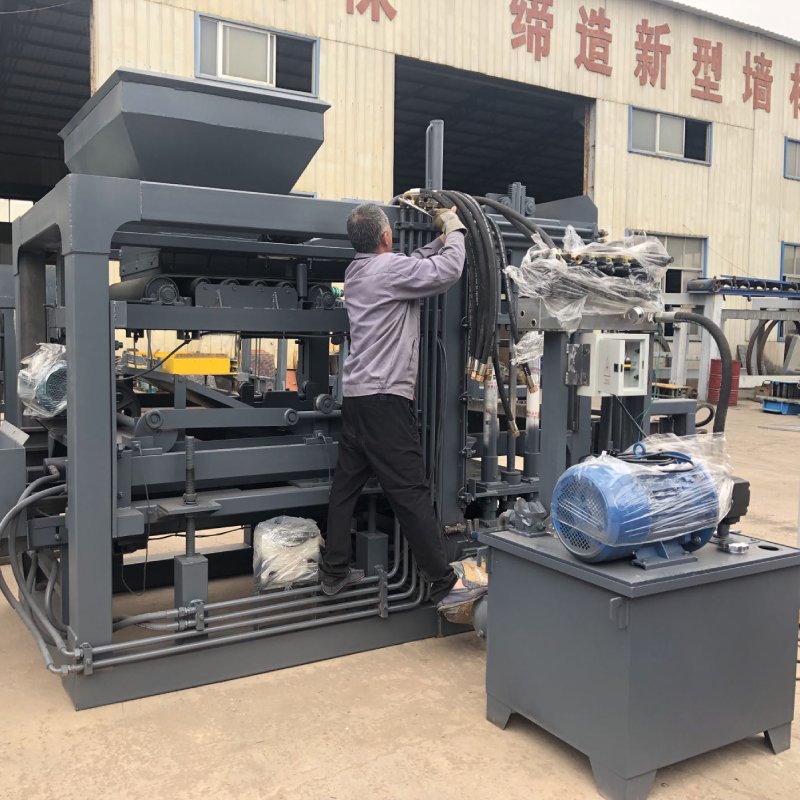
Image source Aiwei Block Machine
Sustainable Trends in Block Brick Manufacturing: Eco-Friendly Machinery on the Rise
Introduction
The global construction industry stands at a crossroads, facing the urgent need for more sustainable practices and environmentally friendly solutions. In this context, the field of block brick manufacturing has undergone a profound transformation, with a growing emphasis on sustainability. Traditional brick production methods have long been associated with resource depletion, high energy consumption, and environmental degradation. However, a wave of innovation has swept through the industry, ushering in a new era of eco-friendly machinery and sustainable practices. This article delves into the sustainable trends that are reshaping block brick manufacturing, highlighting the rise of eco-friendly machinery and its positive impact on the environment and the construction sector.
1. Eco-Friendly Raw Materials: Paving the Path to Sustainability
The foundation of sustainable brick manufacturing lies in the choice of raw materials. Traditional clay-based bricks have given way to more eco-friendly alternatives such as fly ash, slag, and recycled aggregates. These materials not only reduce the demand for virgin resources but also divert industrial byproducts from landfills, effectively closing the loop on waste. Moreover, the incorporation of these materials leads to reduced embodied carbon in bricks, making them a greener choice for construction projects.
2. Energy-Efficient Kilns and Firing Techniques
One of the most energy-intensive stages of brick production is the firing process in kilns. Sustainable trends have spurred the development of energy-efficient kilns that utilize advanced insulation and combustion technologies to minimize energy consumption. Additionally, novel firing techniques, such as flash firing and microwave-assisted firing, have emerged, drastically reducing the time and energy required for brick curing. These innovations not only cut down greenhouse gas emissions but also result in significant cost savings for manufacturers.
3. Innovative Brick Designs: Optimizing Performance
Eco-friendly brick manufacturing goes beyond the choice of materials and extends to the design of the bricks themselves. Innovative brick designs are being engineered to enhance thermal and acoustic insulation properties. Hollow bricks, for instance, create air pockets that improve insulation, reducing the need for additional energy-consuming heating or cooling systems in buildings. These designs contribute to energy-efficient structures that have a lower overall environmental impact.
4. Modular Construction and Prefabrication
Modular construction and prefabrication have gained momentum as sustainable approaches to brick manufacturing. Prefabricated brick panels, manufactured off-site using eco-friendly machinery, offer reduced construction waste, faster assembly times, and enhanced quality control. This approach also promotes deconstruction and material reuse, enabling structures to be disassembled and components repurposed at the end of their lifecycle, minimizing waste and extending the longevity of resources.
5. Solar-Powered and Renewable Energy Integration
The integration of renewable energy sources into brick manufacturing processes is a significant trend driving sustainability. Solar-powered kilns and production facilities are becoming more common, harnessing the power of the sun to reduce reliance on non-renewable energy sources. By tapping into renewable energy, brick manufacturers can significantly decrease their carbon footprint and contribute to a cleaner energy mix for the construction industry.
6. Digitalization and Smart Manufacturing
The digital revolution has not bypassed brick manufacturing, with smart technologies playing a pivotal role in sustainability efforts. IoT (Internet of Things) sensors, data analytics, and automation are being employed to optimize resource utilization, monitor energy consumption, and improve production efficiency. Real-time data insights allow manufacturers to make informed decisions, identify areas for improvement, and implement strategies to reduce waste and energy usage.
7. Circular Economy Principles: Reimagining Brick Lifecycle
Sustainable brick manufacturing aligns with circular economy principles, aiming to minimize waste and maximize resource efficiency. Brick recycling initiatives are gaining traction, enabling old bricks to be salvaged, cleaned, and reintegrated into new construction projects. Additionally, some manufacturers are exploring the use of biodegradable or reusable molds and formwork, further reducing the environmental impact of brick production.
Conclusion
The sustainable trends in block brick manufacturing are a testament to the industry’s commitment to environmental responsibility and innovation. The rise of eco-friendly machinery, coupled with the adoption of sustainable practices, is reshaping brick production processes from the ground up. By embracing alternative raw materials, optimizing energy consumption, and integrating renewable energy sources, brick manufacturers are reducing their ecological footprint while contributing to more sustainable construction practices. As the construction industry evolves, the adoption of these trends not only benefits the environment but also positions the sector as a driving force for positive change in the global quest for sustainability.
